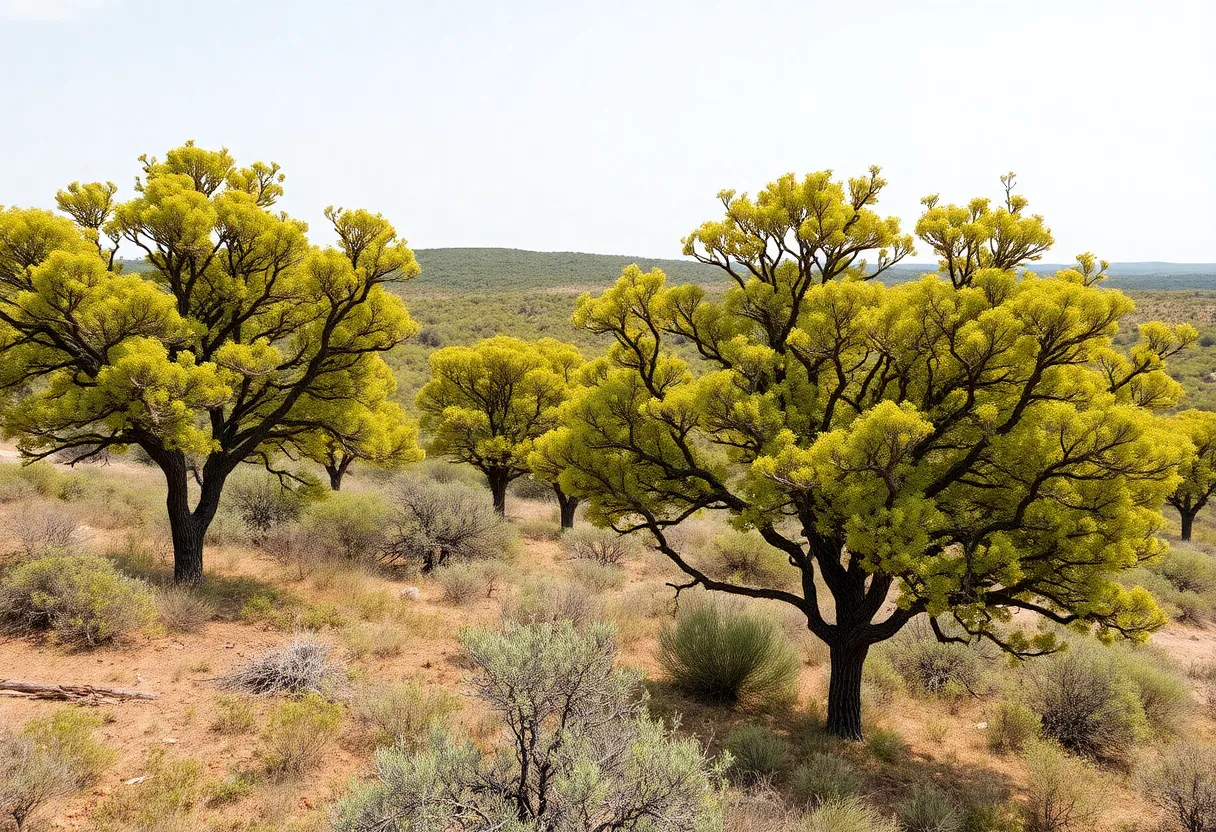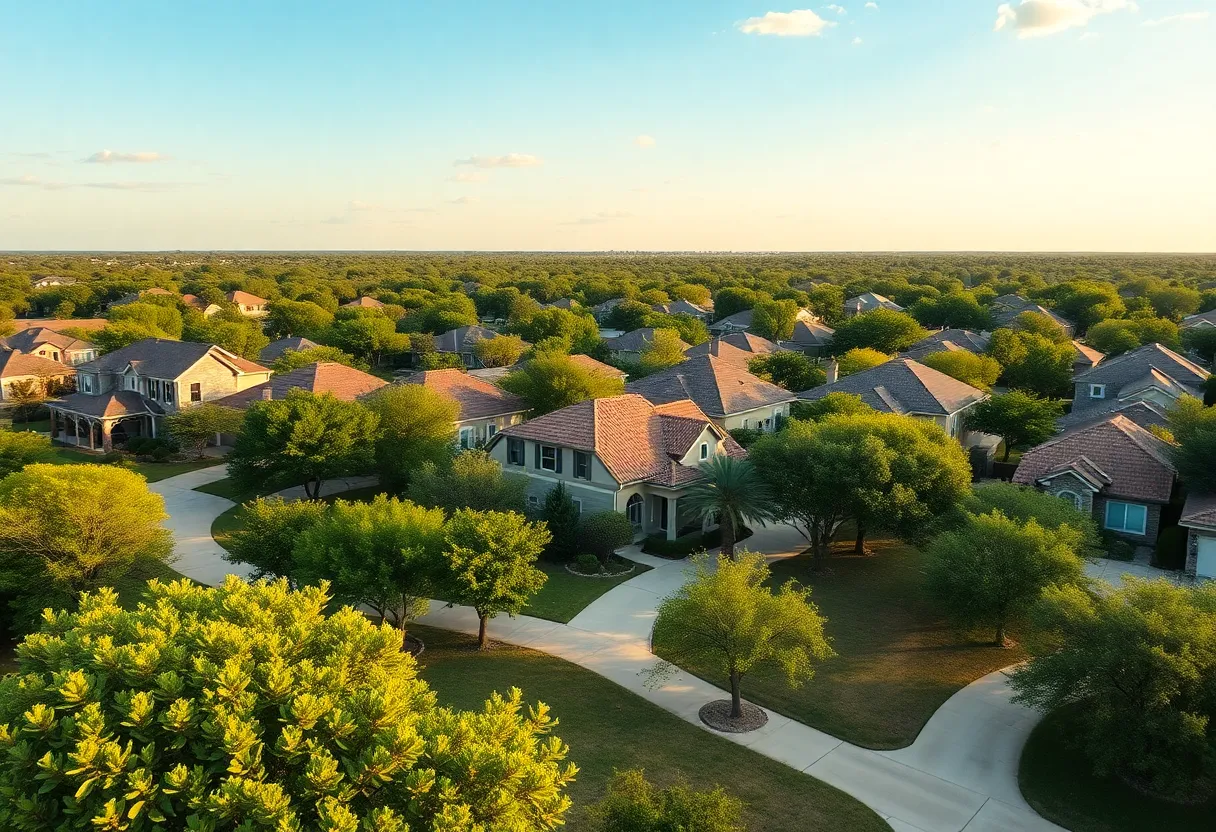News Summary
As the mountain cedar pollen season intensifies in San Antonio, allergy sufferers are feeling the effects of rising pollen counts. The highest count reached 9,610 grains per cubic meter on February 1, 2025, emphasizing the urgency for residents to manage their symptoms. The season typically lasts through Valentine’s Day, and understanding pollen levels is crucial for those affected. This article explores the differences between mountain cedar and Ashe juniper trees, the allergy implications, and recommendations for managing cedar fever in the community.
Mountain Cedar Pollen Season Peaks in San Antonio
San Antonio residents, brace yourselves! The season for mountain cedar pollen has kicked into high gear, and if you’re among those who suffer from allergies, you may already be feeling it. While the season started off quite gently due to environmental stress, recent data shows that the pollen counts are climbing, signaling that we’re right in the thick of it.
What’s Happening with Pollen Counts?
The latest records have shown a significant spike in mountain cedar pollen, with the highest count hitting a whopping 9,610 grains per cubic meter on February 1, 2025. Just a few days later, on February 4, 2025, it was still a robust 3,820. That’s enough to make even the toughest noses tingle! The mountain cedar season usually stretches through Valentine’s Day, so those who are allergic will need to stay vigilant for a couple more weeks.
Understanding Pollen Counts
Pollen counts can be categorized into different levels, so here’s a quick refresher for those keeping score at home.
- Under 100: Low
- 100 to 499: Moderate
- 500 to 9,999: High
- 10,000 to 20,000: Very High
If the pollen count keeps rising, it may just breach the infamous “very high” threshold, which typically occurs between 20,000 to 32,000 grains per cubic meter!
What’s the Difference: Cedar vs. Ashe Juniper?
Interestingly, while we commonly call them mountain cedars, these trees are actually known as Ashe juniper trees and aren’t true cedars at all. Named after the pioneering forester William Willard Ashe, these trees truly love the limestones and hills of the Texas Hill Country. That’s why, in this area, there are a staggering 35 million tons of them gracing the landscape.
Hailing from the Mediterranean region, true cedar trees are a different matter altogether. Fortunately—or unfortunately, depending on your allergies—Ashe junipers have found a welcoming home in Texas.
The Allergy Connection
So why does this matter? Well, male Ashe juniper trees are the culprits releasing the pesky pollen. They do this through tiny cones from December to mid-February, creating a tricky situation for allergy sufferers. The symptoms aren’t just a sneeze here or there; they can trigger what many in the region refer to as “cedar fever.” This uncomfortable reaction includes itchy, watery eyes and a parade of sneezing fits.
For those in San Antonio feeling the effects, there are some effective options to tackle these pesky symptoms. Many residents turn to allergy pills, nasal sprays, drops, or even shots from specialists.
The Cedar Tree Dilemma
In San Antonio, if the pollen counts are too high, some might consider removing cedar trees from their properties to alleviate their symptoms. However, this might be easier said than done, as the sheer number of these trees in the surrounding areas means that the pollen will likely continue to waft in from outside.
Stay Informed with Pollen Counts
If you’re living in or around San Antonio, it’s wise to keep an eye on the daily pollen counts. Access to updated information can be crucial for planning your outdoor activities, particularly when that pollen count starts creeping up.
As we head towards mid-February, remember to stock up on those allergy remedies, or at least keep some tissues handy! The mountain cedar is making its presence known—so let’s be prepared for whatever allergy symptoms might come our way!
Deeper Dive: News & Info About This Topic
HERE Resources
San Antonio Experiences Record High Cedar Pollen Counts
Additional Resources
- KSAT: Mountain Cedar Elevated Counts
- Wikipedia: Mountain Cedar
- KSAT: January 2025 Weather Recap
- Google Search: Weather January 2025 San Antonio
- KSAT: Earthquake in Karnes County
- Google Scholar: Karnes County Earthquake
- KSAT: Cold and Wintry Weather Timeline
- Encyclopedia Britannica: Wintry Weather
- KSAT: Rock ‘n’ Roll Running Series Forecast
- Google News: San Antonio Rock ‘n’ Roll Running Series 2024







